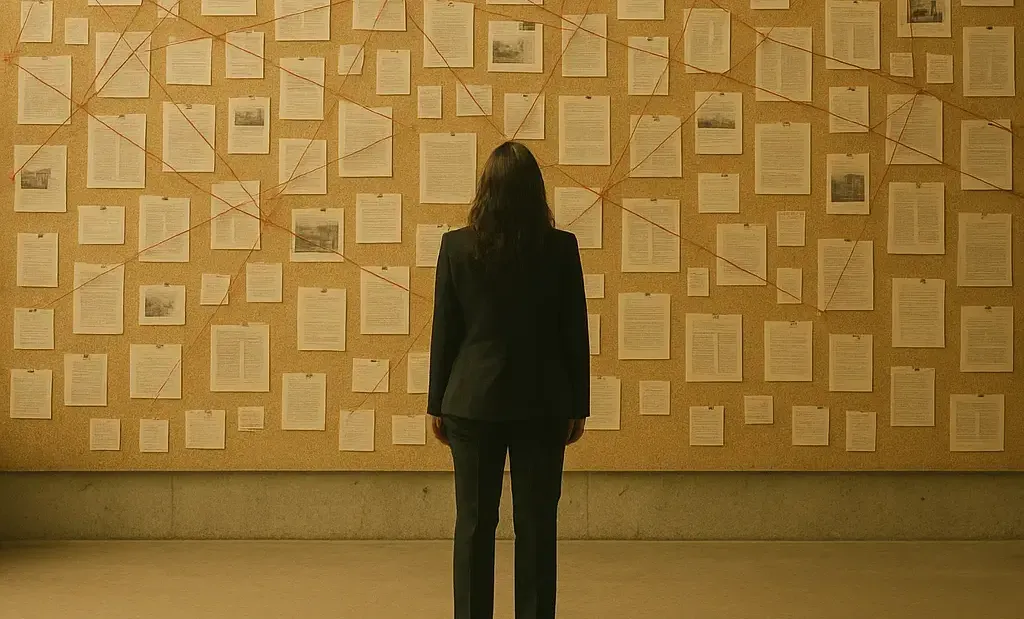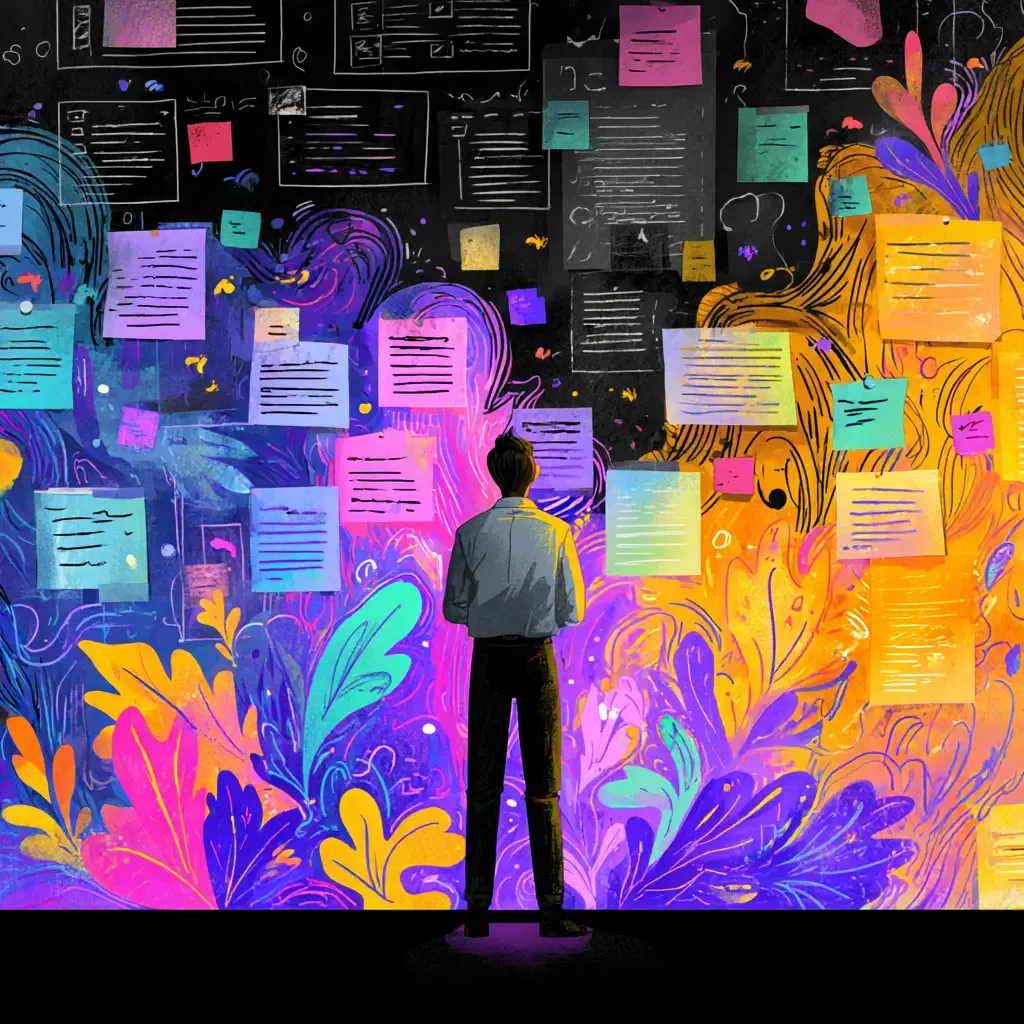The Meeting That Didn't Have to Go That Way
There was a moment, early in my consulting career, where I watched a senior leader walk into a steering committee meeting completely unprepared. His posture was confident, but he was flying blind. He hadn’t reviewed the materials, didn’t know about a stakeholder shift that had taken place the day before, and missed the fact that a critical milestone had just slipped two weeks. He got steamrolled. Worse, he made decisions based on stale information that would need to be undone later.
What struck me most wasn’t his failure—it was how easily it could have been prevented. With a short prep brief, a prioritized agenda, and two minutes of strategic framing, the meeting would have gone differently. He didn’t need more information. He needed support. He needed someone—or something—to help him stay ahead of the game.
He needed a Chief of Staff.
And today, with the right use of AI, we can all have one.
What a Chief of Staff Really Does
In the traditional sense, a Chief of Staff is a strategic operator who lives one level above the day-to-day, helping leaders filter what matters, manage cross-functional coordination, and protect their focus. They surface risks, prep decisions, and build internal muscle around execution and follow-through.
Change practitioners often play a similar role—acting as a behind-the-scenes advisor, a strategic amplifier, and an emotional translator. But who plays that role for us?
Enter AI. Done right, it can become your second brain, quiet operations team, and personal mirror.
The Problem with 'Tool Overwhelm'
Many leaders and practitioners resist adopting AI not because they doubt its potential, but because it feels like one more thing to learn in an already overloaded day. We tell ourselves we'll "look into it when things calm down." Spoiler: they never do.
This resistance often stems from a hidden cognitive tax. Learning a new tool comes with uncertainty, trial and error, and the temporary discomfort of not being immediately good at something. Ironically, it's the same friction we help others navigate during change work.
We must coach ourselves the way we coach others: Start with a small win. Make it personal. And keep the focus on outcomes, not tools. The friction isn’t permanent—but the leverage can be.
AI Isn’t Just a Tool—It’s an Extension of Your Thinking
We need to stop thinking about AI as a single-use productivity app and start thinking about it like a strategic partner. Most people use AI to write a better sentence or summarize a meeting. That’s fine. But the real value is upstream: helping you think more clearly, act more strategically, and stay ahead of the curve.
Your personal Chief of Staff AI can:
- Flag gaps in stakeholder alignment
- Prompt you with weekly priorities or reflective questions
- Draft responses tailored to different personality types
- Track project milestones and remind you of upcoming risks
- Connect insights across documents, people, and timeframes
The best setup is rarely a single AI. I use Gemini for quick contextual asks on mobile, ChatGPT with memory for custom GPT agents and meeting support, and NotebookLM as my ongoing knowledge base and project archive.
Here’s the trick: don’t start with the tool. Start with the friction. What keeps you from doing your best work? What derails your focus? What work keeps repeating because context gets lost?
Solve that, and the AI just becomes the delivery system.
Case Study: From Chaos to Clarity
One of my clients, a director in a Fortune 500 utility, was drowning in status meetings, disconnected project threads, and recurring confusion over who owned what. She wasn’t disorganized—she was over-responsible. Her days were filled with triage, and by 5 p.m., she barely remembered what she set out to accomplish.
Together, we created a lightweight AI stack: ChatGPT for communication drafts, NotebookLM for stakeholder and project documentation, and a custom GPT trained on her voice and past updates. Within two weeks, she stopped starting from scratch every day. By week four, her exec briefings were being complimented for their clarity.
The breakthrough wasn’t technical. It was behavioral. She gave herself permission to slow down and design support around her. That’s when the work got lighter.
Your Personal AI Stack: From Static to Strategic
Here’s how to think about your AI setup like an actual Chief of Staff function:
- NotebookLM: The memory. Store playbooks, transcripts, timelines, and SOPs. Ask it to summarize, cross-reference, and keep the “why” attached to the “what.”
- ChatGPT (Custom GPTs): The operator. Build agents that write in your voice, prep agendas, create weekly briefs, and draft sensitive communications.
- Gemini (mobile): The whisperer. Talk to it while walking, commuting, or recentering. Ask for fast synthesis or thought prompts.
- Notion / Obsidian: The second brain. Integrate notes, ideas, and to-dos across your projects so your AI can pull from a deeper personal knowledge base.
- Loop / OneNote: Microsoft-aligned second brain alternatives with good ecosystem fit.
Build light workflows across them, not heavyweight automations. Think adaptive, not rigid.
Resistance to Delegation—Even to AI
Here's an uncomfortable truth: many high-performers struggle with delegation. Not because they don't trust others, but because they don't trust the process. They believe, consciously or not, that doing it themselves is faster, cleaner, and more “right.”
This same dynamic plays out with AI. People try it once, see imperfect output, and never return. They forget that delegation—human or artificial—is a skill. And like any skill, it improves with context, training, and feedback.
Your AI won't get better unless you teach it. And it won't gain your trust unless you let it fail, adjust, and try again. Leaders who understand this treat their AI not as an intern, but as a developing team member. That's when leverage kicks in.
How to Build a Weekly AI Ritual
Rituals beat resolutions. If you want your AI to become a true extension of your strategic thinking, you need to make it a weekly habit, not a heroic one-off.
Try this simple rhythm:
Monday: Intentions + Priorities
Prompt: “Here’s my calendar and top three goals. What should I prioritize, reschedule, or delegate this week?”
Wednesday: Midweek Check-In
Prompt: “Based on what I’ve done so far, am I on track? What’s at risk?”
Friday: Reflection + Prep
Prompt: “Summarize the big wins, key decisions, and things I want to remember for next week. What would future-me want to know?”
You can do this in 10 minutes using ChatGPT or Claude. Even better, build a single page in Notion or Obsidian where you store these inputs and reflections. Let your AI refer back to them.
These small, intentional check-ins train your AI and anchor your own thinking. Over time, they become your leadership tempo.
Tool-by-Tool: When to Use What
One of the most common questions I get is: “Which AI should I use?”
Here’s the short version:
- ChatGPT: Best all-purpose partner. Use custom GPTs to handle prep briefs, email rewrites, simulations, summaries, and messaging.
- Claude: Great with large amounts of data. Excellent for uploading 100+ pages of docs and asking for analysis.
- Gemini: Handy for voice-driven queries, especially on the go. Surprisingly useful for clarity prompts.
- NotebookLM: Think of this as your personalized wiki. Build knowledge bases around projects, teams, or roles. Ask it questions about your stuff.
- Notion / Obsidian: For structured knowledge capture. Great second brains.
- Loop / OneNote: If you’re in Microsoft world, these are your best integrations.
Don’t commit to one. Use the best tool for the task. The real magic isn’t in loyalty—it’s in orchestration.
Field Report: Common AI Misfires
Let’s be honest—AI isn’t perfect. And neither are we.
Here are some common AI fails I see in the field:
- Overengineering the setup: Trying to automate everything before defining the problem. Simpler is smarter.
- Bad prompting: Asking vague, open-ended questions like “What do I do next?” and expecting clairvoyance.
- Context starvation: Not giving the AI any background, then blaming it for generic output.
- Giving up too early: Trying a single prompt, getting a bland answer, and abandoning the tool forever.
The fix? Treat AI like a new hire. Train it. Clarify the assignment. Give feedback. Let it grow into the role.
From Assistant to Advisor: The Long View
In six months, your AI can become:
- A prep coach
- A story-shaper
- A strategic lens
- A reliable second set of eyes
But only if you evolve how you use it. What starts as “help me write this email” becomes “help me think through this problem.”
This shift from assistant to advisor is gradual. But it’s also transformative. You stop reacting. You start designing. You begin using your time the way you actually want to.
Imagine walking into your next meeting not frazzled, but focused—because your AI already flagged the risks, drafted the notes, and helped you prep the pitch.
That’s not science fiction. That’s five minutes of smart prep, consistently applied.
Real Talk
I've worked alongside world-class Chiefs of Staff and coached leaders who desperately needed one. The best ones aren’t flashy. They’re friction removers. They act as force multipliers—prepping the room, previewing the risks, and protecting their leader’s attention like it’s a non-renewable resource. But here’s the part we don’t say out loud: most of us will never be assigned a Chief of Staff.
And yet, the need doesn’t go away. You still have to lead. You still need to manage context, track crosswinds, and make clean decisions inside dirty realities. So what’s the play when there’s no one clearing the path ahead of you?
You build the support yourself.
That’s what AI unlocks—not magic, not perfection, but leverage. A thinking partner that doesn’t need lunch breaks or calendar invites. A behind-the-scenes helper who never forgets the ‘why’ behind the ‘what.’ The key isn’t automation. It’s augmentation. And it only works if it fits how you operate.
That means personalizing your prompts, choosing tools that match your mental model, and taking five minutes to train your system before every sprint. It means recognizing that delegation isn’t just about offloading tasks—it’s about designing your environment to let you focus on what only you can do.
If you’ve ever said, “I could move faster if I didn’t have to manage all the little things,” this is your moment. Don’t wait for permission. Build your own back office.
Final Thought
AI won’t replace your intuition, your relationships, or your judgment—but it will quietly scaffold them. Used well, it gives you the space to think before reacting, to design instead of constantly firefighting, and to walk into your next meeting less reactive and more ready.
This isn’t about turning you into a machine. It’s about reclaiming your focus.
Because in the end, your value isn’t how many tabs you keep open or how fast you reply to email—it’s in how clearly you see the terrain, how confidently you move, and how intentionally you lead others through change.
That’s the true promise of an AI-powered Chief of Staff. Not the flash, but the foundation. Not more noise, but more signal. A quiet revolution in how you show up—every day, every decision, every room.
So teach it. Tweak it. Talk to it. And then walk taller.
Your future self is already thanking you.
ChangeGuild: Power to the Practitioner™
Recommended Reading
If you enjoyed this article, you might also find these helpful:


Build Your AI-Powered Chief of Staff
You're already doing the work of a leader. It's time to get the support system to match.
I coach executives, change leaders, and senior professionals to design personal AI workflows that act like a Chief of Staff—flagging risks, organizing context, and helping you move faster with more clarity.
Book a coaching call to build a system that thinks like you, works with you, and helps you lead at your best.
This post is free, and if it supported your work, feel free to support mine. Every bit helps keep the ideas flowing—and the practitioners powered. [Support the Work]







